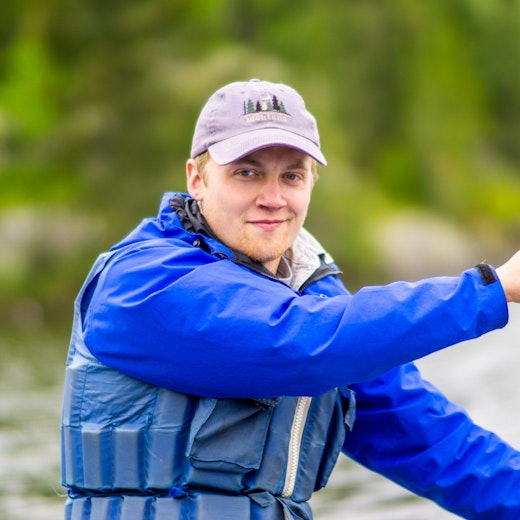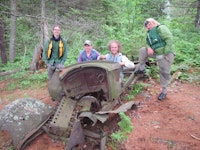
The Superior-Quetico Region of North America has been inhabited by people for around 10,000 years. From Paleo-Indians to French Voyageurs, many cultures have left their mark on the U.S.-Canada Border region. History buffs and common folk alike can appreciate the rich history of the area. The region also contains unique animals not seen in other parts of North America.
Below we feature some interesting historical artifacts and other cool treasures we’ve encountered on recent wilderness adventures.
Note: It is unethical and sometimes unlawful to remove or damage these treasures. We leave them right where we found them.
1. Old Gold Mines
Beginning in the mid-1800’s, prospectors spent a fair amount of time searching the BWCAW for easily accessible veins of gold and other precious metal. They found some, but its location, purity, and quantity was too inconsistent so large-scale mining wouldn’t have been profitable.
Some evidence of their endeavors remain, though most of the shafts have been filled in with rock.
2. Underwater Remnants of Docks and Railroads
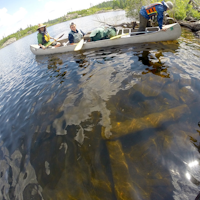
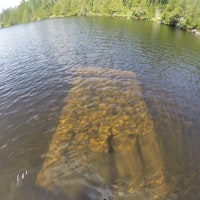

The great white and red pines of Minnesota have long been a target for loggers. The remote wilderness’s of the BWCAW and Quetico used to be home to a burgeoning logging industry with railroads, horses, and log runs transporting downed timber out of the area and across the country.
Ending only in 1978, the area still contains remnants of its once bustling industry.
3. Abandoned Copper Mining Equipment
Isle Royale contains some of the purest copper deposits in the world, but the veins are small and the island’s remote location makes extracting it an expensive endeavor. Still, the island has been mined for over 5,000 years and it peaked in the mid-1800’s. But then the island became a National Park in 1940 and all exploitive activities were banned.
Mine pits, trenches, and mining equipment still dot the island and can be uncovered by keen eyes.
4. Moose Antlers
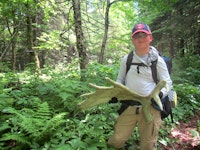
The moose is Minnesota’s largest wild animal. They love to hang out in swampy habitats, where they graze on aquatic vegetation.
Each spring, bull moose shed their antlers and grow a new set. Lucky explorers who stumble upon these antlers are often suprised at just how heavy they can be.
5. Logging Camp Remains
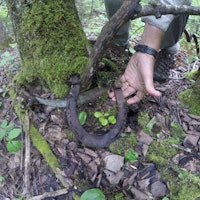


Various logging camps over the last 200 years left behind what some might call junk, but John Erdmann calls treasure. We do enjoy stumbling upon things like old chains, hooks, horseshoes, pots and pans, and hatchet heads!
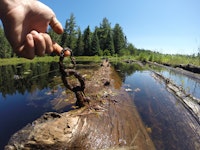
6. Vintage Cars
There are several cars buried in the forests of the Superior-Quetico region. No one is exactly sure why they weren’t removed when the area became a protected wilderness, but one thing is certain: The rough and rocky area these cars were found in - combined with the long, harsh winters of the Northwoods - does not seem like the ideal place for a Sunday cruise in a Buick.
7. Spongebob*
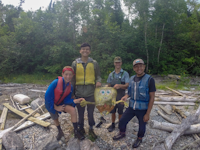
Who lives in a litter pile in the BWCA? SPONGEBOB SQUAREPANTS!
We stumble upon some pretty random things sometimes. On a serious note, though Leave No Trace principles are put in place to prevent littering and minimize human impact, even in remote areas we stumble upon evidence of modern humans.
*We do not condone littering.
Finding treasures and other cool things can connect us with the past and put time into perspective.
It also reminds us of the once up-and-coming industrialization of the Superior-Quetico region. We feel fortunate that environmentalists and policy-makers had the vision and dedication to protect this beautiful area. Let’s hope it remains protected forever!






